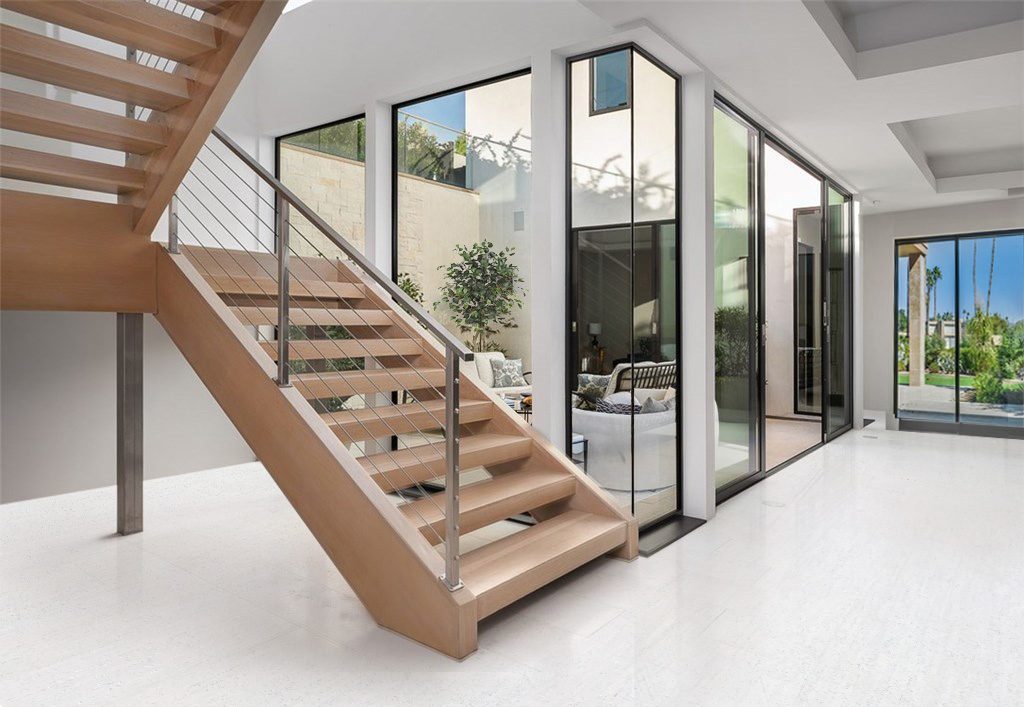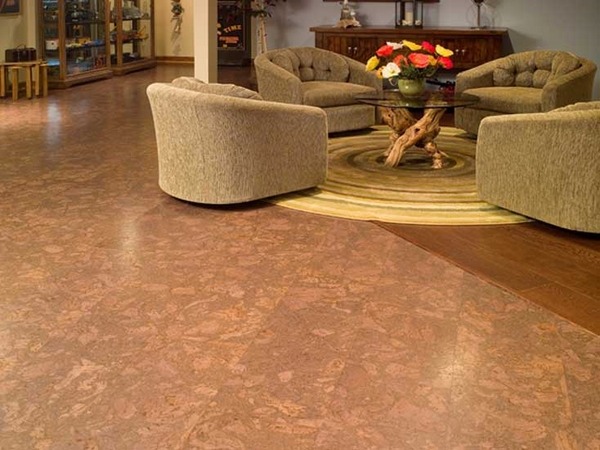Why Cork Is Ideal for Basement Environments
When I think about flooring in the basement, the first concerns that come to mind are moisture control, warmth, and comfort. Cork tiles check all these boxes, and that’s why they’ve gained so much attention for below-grade installations. Basements often present challenges that don’t apply to main-level floors, so it’s important to use materials that are specifically suited to these spaces.
- Cork has excellent thermal insulation properties. Since basements tend to be colder due to their location below ground, having a floor that naturally retains warmth makes a noticeable difference. Unlike tile or concrete, which can feel icy year-round, cork feels warm to the touch, even in winter.
- It also acts as a sound insulator. Many basements are converted into family rooms, home theaters, or offices—spaces where noise control matters. Cork absorbs sound vibrations rather than reflecting them, helping create a quieter environment even when people are moving around above.
- Cork tiles are naturally resistant to mold and mildew. This is especially important in damp or humid basement conditions. The cellular structure of cork includes a waxy substance called suberin, which helps repel water and makes the tiles less vulnerable to moisture damage compared to hardwood or carpet.
- Comfort underfoot is another huge plus. Basements with hard flooring can feel uninviting, but cork tiles are soft and springy. If you spend time standing or walking in the basement, your feet and joints will thank you. This makes cork a smart choice for playrooms, workout areas, or craft spaces.
- It creates a cozy atmosphere. The natural grain and warm colors of cork bring life to spaces that are often dim or uninspired. A basement finished with cork tiles doesn’t feel like an afterthought—it becomes an inviting, integral part of the home.

Preparing the Basement for Cork Tile Installation
Installing cork tiles in a basement takes more than just picking a pattern and sticking them down. Because basements are below-grade spaces that can be prone to moisture and shifting temperatures, proper preparation is key. Skipping these steps could lead to warping, buckling, or damage over time.
Start by addressing any moisture issues. Before even thinking about installation, it’s essential to ensure that the basement is dry. That means fixing any leaks, cracks, or drainage problems. Use a moisture meter to test the concrete subfloor—if levels are too high, consider installing a vapor barrier or using a dehumidifier regularly.
A level subfloor is critical. Cork tiles are flexible but still require a smooth, even surface to avoid visible bumps or seams. If the concrete subfloor has imperfections, fill them in with a leveling compound and allow it to cure completely before proceeding.
You’ll need to choose between floating and glue-down tiles. For basement floors, glue-down cork tiles are often the better option because they’re more stable and less likely to shift with changes in temperature or humidity. However, floating cork flooring can work if paired with a high-quality underlayment and vapor barrier.
Acclimate the cork tiles to the room. Bring the tiles into the basement at least 48 hours before installation to let them adjust to the room’s temperature and humidity. This step helps prevent expansion or contraction after installation.
Follow manufacturer guidelines for adhesive and sealing. For glue-down tiles, use an adhesive made specifically for cork, and apply it evenly with a notched trowel. Once the tiles are in place and dry, finish with a water-based polyurethane or similar sealant to protect the surface from scratches and stains.
Design Choices and Visual Impact
One of the things I really like about cork tiles is their versatility in design. Some people assume cork flooring only comes in one or two basic shades, but today’s options are far more varied. Whether you’re after something understated or a bit more eye-catching, cork offers plenty of choices for making a basement look stylish and unique.
Natural cork has a rich, organic appearance. It usually comes in warm tones of honey, caramel, or coffee, all of which add visual warmth to a cool basement. The natural texture and patterning of cork also create depth, giving the floor a handcrafted look.
There are tinted and patterned cork tiles available. If you want something beyond the standard shades, manufacturers now offer cork tiles dyed in greys, whites, or even deep blacks. There are also patterned options that mimic the appearance of wood, stone, or fabric for a more decorative finish.
Tile size and layout matter too. Cork tiles typically come in 12×12-inch squares, but there are larger planks and rectangles as well. You can install them in traditional grid patterns or create herringbone or offset designs to give the room more personality.
Seamless transitions make a difference. Cork flooring pairs well with other materials like ceramic tile or LVP (luxury vinyl plank). In basements where you may have a laundry area, bathroom, or storage zone, using cork for the main space and transitioning to a water-resistant surface in wet areas creates both function and flow.
Lighting can change how cork looks. Because cork is a natural material with small air pockets and grain patterns, it reflects light differently depending on the time of day. Paired with good lighting, cork flooring can help make a basement feel brighter and more alive.
Maintenance and Care for Long-Term Use
Cork tiles in the basement require regular care, but they’re not high maintenance. In fact, with a few basic routines and some awareness of what to avoid, you can keep your cork floor looking great for years. This is one of the main reasons I often recommend cork to homeowners—it’s both practical and forgiving.
Daily cleaning is simple. A soft broom or vacuum with a hardwood setting is all you need to keep dust and debris under control. Since cork is soft, avoid using vacuums with rotating brushes, which can scratch the surface.
Mop occasionally with a damp cloth or microfiber mop. Never soak cork flooring—excess moisture can seep into seams and cause swelling. Instead, use a well-wrung mop with a gentle pH-neutral cleaner. Avoid anything with ammonia or bleach, which can strip the finish.
Use mats and area rugs in high-traffic areas. Cork is durable but not indestructible. In a basement that’s used as a playroom or home gym, placing rugs in busy spots helps reduce wear and tear. Just make sure any mats used have breathable backings to avoid trapping moisture underneath.
Reapply sealant every few years. The protective finish on cork tiles wears down over time, especially in active households. Re-coating the floor with polyurethane extends its life and keeps it resistant to stains, water, and scratches.
Watch out for furniture legs. Place felt pads under chairs, couches, and tables to prevent dents or gouges. Heavy items left in one spot for too long can leave permanent marks in cork, so consider rearranging furniture from time to time to allow the floor to “recover.”
Common Applications and Functional Benefits
Basement floors serve many different purposes—from recreation areas to home offices—and cork tiles adapt well to all of them. What I’ve found most rewarding about installing cork in a basement is how it brings together form, function, and comfort across a variety of uses.
Family rooms and TV areas feel more relaxed. Cork tiles absorb noise and cushion footsteps, which is perfect when kids are playing or adults are watching movies. It softens sound naturally, which makes it ideal for open-plan basement spaces.
Workout rooms benefit from the resilience of cork. It’s soft enough to support yoga, stretching, or free weights, and firm enough to stay stable underfoot. It’s also warmer than rubber or foam mats, which helps keep the space comfortable year-round.
Home offices feel grounded and professional. Cork adds texture and warmth without feeling too informal. Plus, it reduces echo, which can help with audio quality during video calls or recordings. You can roll an office chair over sealed cork without damaging it.
Guest rooms feel more inviting. A basement bedroom with cork flooring instantly feels cozier and less sterile than one with tile or concrete. Add a couple of area rugs and some layered lighting, and it becomes a quiet retreat that guests appreciate.
Craft rooms and workshops get a practical upgrade. Cork is forgiving if you drop tools, scissors, or supplies. It’s also easier on your back and knees if you spend long hours on your feet, making it a functional choice for creative spaces.
Best Basement Flooring Options – Cork Floating Floors – ICork Floor
Cork Soundproofing Does Cork Have Acoustic Properties?
Cork Flooring: Eight Reasons to Love It Cork flooring, Cork
White Bamboo – 1/2 Inch (12mm) – Cork Floating Flooring
Basement flooring ideas – types, options, pros and cons
Cork Works: Installing Cork Flooring – Mother Earth Living Cork
Related Posts:









